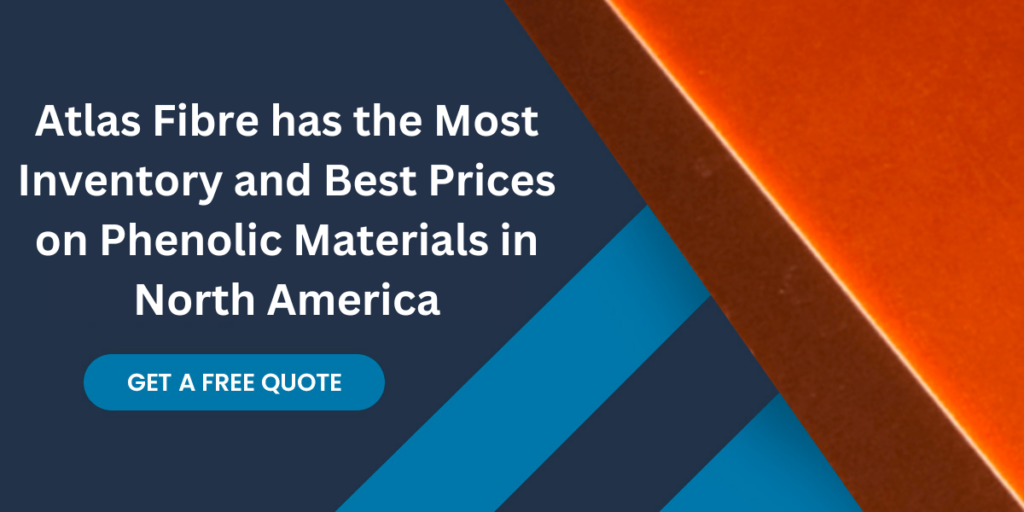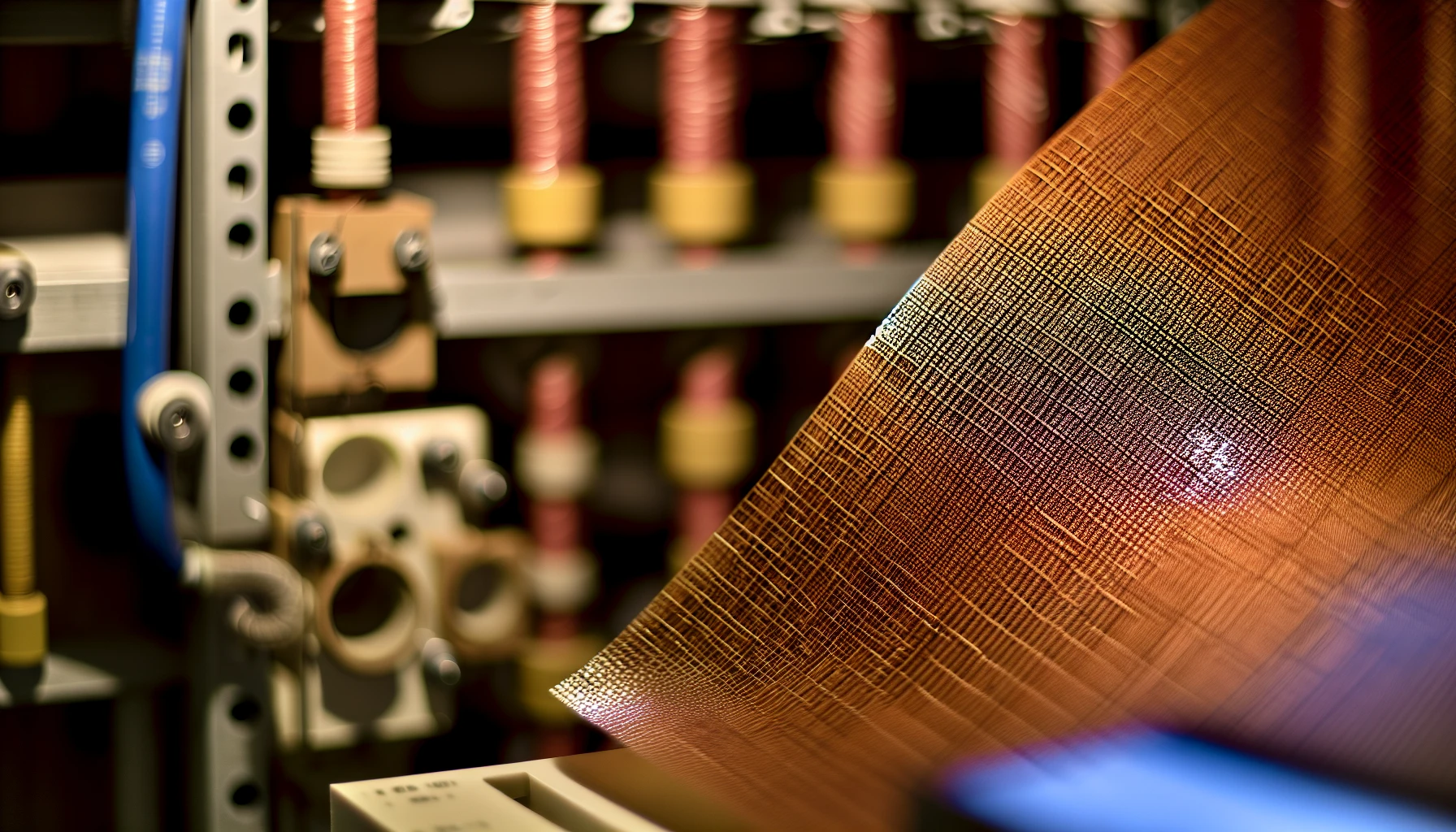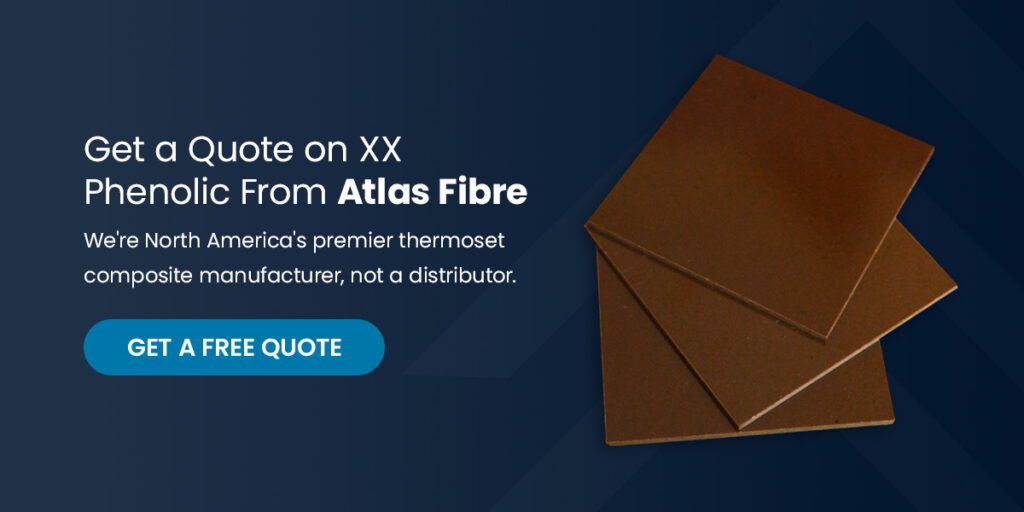In the world of materials science, phenolic materials stand out as a versatile and highly beneficial class of composites that can be tailored to suit a myriad of applications. From electrical insulation to structural components, these phenolic materials offer a unique combination of properties that make them a popular choice across various industries. Are you ready to explore the world of phenolic material and discover their advantages and applications in modern industries?
In this blog post, we will delve into the fascinating realm of phenolic material, uncovering the different types, properties, and applications that make them indispensable in today’s world. We will also discuss customization and fabrication options, allowing you to understand how these phenolic materials can be tailored to meet specific requirements.
Key Takeaways
- Phenolic materials are composites made of paper or fabric and synthetic resin, offering exceptional properties such as physical toughness, electrical insulation and resistance to wear.
- They come in various forms for a range of applications including industrial manufacturing, insulating electrical equipment and producing laminates with distinct performance characteristics.
- Customization options provide the ability to tailor phenolic material according to specific requirements.
Understanding Phenolic Material

Phenolic materials, also known as phenolic plastic, are composite materials produced by applying heat and pressure to paper or fabric imbued with synthetic resin. These materials are highly durable and dense. Owing to their exceptional properties, phenolic materials are well-suited to a multitude of applications, including:
- Electrical insulators
- Circuit boards
- Automotive parts
- Aerospace components
- Construction materials
- Consumer goods
Novolacs and resols are the two primary types of phenolic materials. Their unique characteristics stem from their aldehyde to phenol ratios and variety of resins.
Novolacs and Resols
Novolacs and resols are the two primary types of phenolic materials, with their differences lying in their aldehyde to phenol ratios. Novolacs have a linear or slightly branched chemical structure, while resols feature a cross-linked, three-dimensional structure, contributing to their physical toughness and resistance to abrasion. These materials are synthesized by connecting phenolic (hydroxy-aromatic) monomers with aldehydes, resulting in a light green material.
The distinction between novolacs and resols is significant, as it directly affects their moisture absorption rate and other properties. Comprehending the differences between these two types of phenolic materials is pivotal in selecting the best-suited material for specific applications and requirements.
Resin Varieties
Phenolic materials can be made using various resin types, each offering distinct characteristics and benefits. These resins possess unique properties, such as non-conductivity, flame resistance, high mechanical strength, stability, heat resistance, and low toxicity. The variety of resin used in phenolic materials can significantly impact their overall performance, with different resins enhancing impact strength, heat resistance, stiffness, and binding ability to various substrates.
The intended application and the required mechanical, electrical, and dimensional properties should be considered when selecting a resin variety for phenolic materials. Different resin varieties possess different characteristics, such as brittleness, spinnability, and aromatic ring structure, which can affect the performance of the phenolic material in various applications.
Properties and Benefits of Phenolic Material
With their impressive electrical insulation properties and physical toughness, phenolic materials prove to be ideal for a wide array of applications. Their resistance to wear, impact, and corrosion sets them apart from other materials, offering durability and longevity in the face of demanding environments.
Their excellent heat, hardness, and dimensional stability further broaden their appeal for diverse applications, making them a suitable dense material with moderate mechanical strength.
Excellent Electrical Properties
Phenolic materials are highly praised for their superior electrical characteristics, making them a popular choice for electrical applications. They demonstrate high dielectric strength, low dielectric loss, and electrical resistance, ideal for insulating electrical antennas, spools, and electrical equipment.
In industries that require superior electrical insulation properties, their non-conductive nature and high electrical resistivity render phenolic materials an invaluable resource.
Physical Toughness and Durability
Phenolic materials, known for their strength and resilience, are highly resistant to wear and impact due to their low phenolic resin content. They can withstand a wide range of temperatures and humidity, making them suitable for various environments. Furthermore, they can be infused with flame retardant epoxy resins for additional resistance to flame and enhanced impact strength, heat resistance, and stiffness with the incorporation of fillers such as cotton, glass, and mineral fillers.
Owing to these properties, including physical toughness resists abrasion, phenolic materials stand as the preferred option for applications that demand toughness and durability.
Common Forms and Applications of Phenolic Material
Available in various forms like sheets, rods, and tubes, phenolic materials cater to diverse applications and requirements. They are widely used in:
- Industrial applications
- Insulation applications
- Electrical applications
- Manufacturing of tires to enhance traction
The production of phenolic laminates is also common, as these materials offer distinct electrical, mechanical, and chemical performance properties.
Phenolic Sheet

Phenolic sheets are commonly utilized in parts fabrication, electrical circuits, and bullet and storm protection equipment. There are various types of phenolic sheets available, each offering unique properties and advantages, such as natural canvas phenolic sheet, “CE” grade black canvas phenolic sheet, natural LE phenolic acid sheet, and economy natural paper phenolic sheet.
These sheets are valued for their versatility, lightweight nature, high water dissipation and low water absorption, and resistance to a broad range of temperatures and humidity.
Phenolic Rod

Phenolic rods are widely employed in electrical insulation and mechanical applications. Some popular options include:
- G-11 phenolic rod: known for its high heat tolerance and prolonged use in high-temperature environments.
- G-10 FR4 glass epoxy rod: suitable for structural, high humidity, and electrical insulation applications.
- CE grade phenolic rod: deemed ‘electrical’ grade.
Phenolic Tube
Phenolic tubes offer a range of unique properties, such as:
- Heat resistance
- Hardness
- Dimensional stability
- Electrical resistance
These properties make phenolic tubes suitable for both structural and electrical insulation applications. Their durability, versatility, and outstanding electrical properties enable them to be utilized across various industries, including manufacturing, electrical, and automotive.
Comparing Phenolic Material Types: Canvas, Linen, Paper, and Glass Reinforced
Reinforcement of phenolic materials can be done with different materials, each conferring unique properties and advantages:
- Canvas: increased mechanical strength
- Linen: finer texture and ease of machining
- Paper: cost-effectiveness and electrical insulation properties in low voltage applications
- Glass: high strength, low water absorption, and good electrical properties
Canvas Phenolic
Canvas phenolic offers increased strength and durability, making it suitable for heavy-duty applications such as electrical insulation, mechanical components, and structural supports. Produced by impregnating canvas fabric layers with a phenolic resin and curing under heat and pressure, canvas phenolic exhibits good strength and durability, with notable wear resistance, minimal moisture absorption, and satisfactory mechanical strength.
Linen Phenolic
Linen phenolic, made from a fine weave linen fabric constructed from high-quality flax fibers, is known for its impressive properties:
- Compressive strength
- Tensile strength
- Flexural strength
- Mechanical properties
- Finer texture
- Improved dimensional stability
- Increased resistance to wear, abrasion, and material fatigue
- Enhanced electrical insulation properties
These qualities make it an ideal choice for precision applications across various industries.
Paper Phenolic
Paper phenolic is a cost-effective option for electrical insulation in low voltage applications, boasting good electrical insulating properties and robust mechanical properties. However, it is not recommended for applications where electrical properties are paramount and humidity is high, as it has low toughness and can generate water during the curing reaction.
Glass Reinforced Phenolic

Glass reinforced phenolic offers high strength, low water absorption, and good electrical properties, making it suitable for structural and electrical insulation applications. Composed of a glass cloth impregnated woven glass fabric and an epoxy resin laminate containing bromine, this material exhibits exceptional electrical insulation, thermal stability, flame retardancy, heat resistance, and surface hardness.
Customization and Fabrication Options for Phenolic Material

Customization of phenolic materials to meet specific application requirements is possible, with varied options for color and performance characteristics. Fabrication techniques such as gas phase methods like chemical vapor infiltration (CVI) and liquid methods also play a significant role in the properties of phenolic materials.
Factors such as resin properties, molecular structure modification, and manufacturing processes like curing and molding can all impact the overall properties of phenolic materials, allowing for tailored solutions across various applications.
Summary
In conclusion, phenolic materials offer a versatile and highly beneficial solution for numerous applications across various industries. With their impressive electrical insulation properties, physical toughness, and unique characteristics offered by different types and resin varieties, phenolic materials are an indispensable resource. Customization and fabrication options also allow for tailored solutions to meet specific requirements, making phenolic materials an invaluable choice in today’s world.
As we have explored the world of phenolic materials, we hope this blog post has provided you with a deeper understanding of their advantages and applications in modern industries. With their versatility and unique properties, phenolic materials will continue to play a crucial role in shaping the future of materials science and engineering.
Frequently Asked Questions
Is phenolic rubber or plastic?
Phenolic material is an industrial plastic that is commonly used for insulation, electrical applications and as a substitute to acrylic. It is cheap to produce and simple to work with.
Is phenolic the same as Bakelite?
Phenolic and Bakelite are both terms used to describe phenol formaldehyde resins, which are synthetic polymers used as a basis for plastics. Bakelite specifically is made from wood flour and phenolic resin and is often used as an electrical insulator.
What are the primary differences between novolacs and resols?
Novolacs and resols differ in their chemical structure, with novolacs featuring a linear or slightly branched structure and resols having a cross-linked, three-dimensional structure. This difference leads to varying levels of moisture absorption and other properties.
What are the key electrical insulation properties of phenolic materials?
Phenolic materials offer excellent dielectric strength, low dielectric loss, and electrical resistance, making them a great choice for insulating antennas, spools, and other electrical equipment.
What factors contribute to the physical toughness and durability of phenolic materials?
Phenolic materials are highly durable and physically tough due to their natural resistance to wear, impact, and corrosion. This strength can be increased by reinforcing them with flame retardant epoxy resins and fillers.
